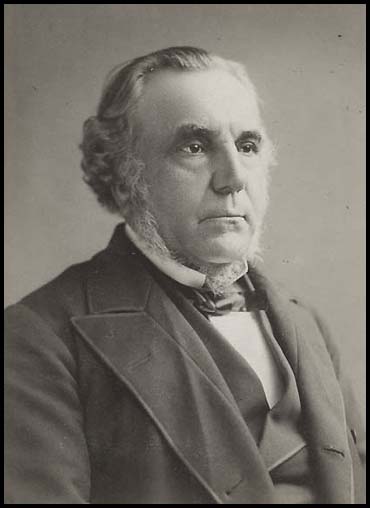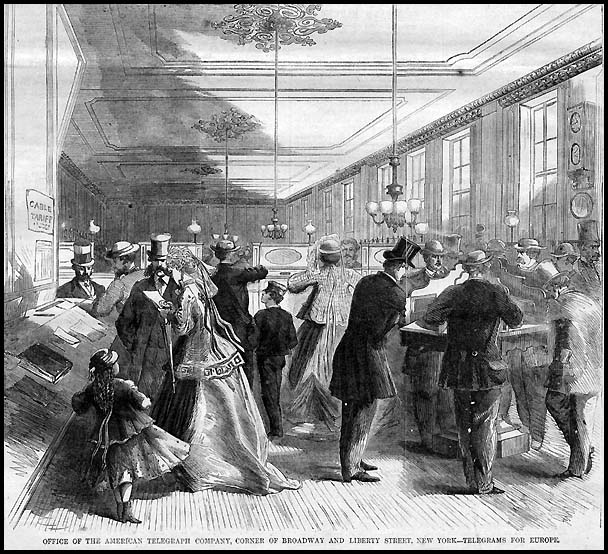- Home, index, site details
- Australia 1901-1988
- New South Wales
- Overview of NSW
- Telegraph lines
- Telegraph Offices
- Date stamps
- Forms
- Envelopes
- Rates
- Stamps
- Queensland
- Overview of Qld
- Telegraph lines
- Telegraph offices
- Date stamps
- Forms
- Envelopes
- Rates
- Stamps
- South Australia
- Overview of SA
- Telegraph lines
- Telegraph Offices
- Date stamps
- Forms
- Envelopes
- Rates
- Stamps
- Tasmania
- Overview of Tasmania
- General developments
- Reports
- Organisation
- Telegraph lines
- Telegraph Offices
- Date stamps
- Railway lines
- Forms
- Envelopes
- Rates
- Stamps
- Overview of Tasmania
- Victoria
- Overview of Vic.
- Telegraph lines
- Telegraph offices
- Date stamps
- Forms
- Envelopes
- Rates
- Stamps
- Ephemera
- Western Australia
- Overview of WA
- Telegraph lines
- Telegraph Offices
- Date stamps
- Forms
- Envelopes
- Rates
- Stamps
The context of the aspirations held by McGowan and Todd.
Although people like Charles Todd and Samuel McGowan had had visions of connecting the Australian Colonies by cable to England, the way to achieve this end could not be identified. In the 1850s and early 1860s, these two pioneers were developing their own Colonial telegraph networks.
Their ambitions were in common with those of other visionaries who, almost from the start of telegraphic communications, dreamt of extending the technology to reach distant shores.
About that time, communication by telegraph was moderately successful on land but, in Europe and America, the emerging telegraphic networks were operated by hundreds of small independent companies whose lines did not connect. Finance was scarce - especially in America due to the Civil War and the Union breaking up.
Nevertheless, starting in the 1840s, submarine cables became the focus of considerable manufacturing activity. This activity aimed to develop the far from perfect technology of submarine cables was. At first the technology could only be described as being highly unsuccessful.
The beginning of submarine technology.
Perhaps the first submarine cable was developed by Samuel Morse. In 1842, he coated a wire with rubber and inserted that into a lead pipe. He then laid this wire between Castle Garden and Governors Island in New York Harbour. A telegraphic message was communicated through the wire over that short distance but it was impractible over a longer distance. Experiments were soon conducted to determine how heavy the cable should be and how best to protect the cables from changing resistance to electrical conductivity and from seawater corrosion (see Wikipedia).
The various problems in America slowed the development effort there ans so attention changed to laying a cable across the English Channel. Europe was by then criss-crossed with long telegraph wires - but England was isolated. As lead pipe could not be used over such distances, technicians experimented with rubber coverings around the telegraph wires but it was soon discovered that rubber quickly deteriorated in sea water.
At that time, Victorians used a product called gutta-percha to make a range of products such as dolls, small ornaments, items of furniture, etc. Gutta percha was a rigid natural latex from the sap of gutta-percha tree found in South-East Asia. It was hard at room temperature but very malleable in hot water and it could be easily molded. Although gutta-percha was expensive:
- it provided an ideal coating of submarine cables because of it being biologically inert, resilient and a good electrical insulator with a high dielectric strength.
- it is useful in dentistry for root canal therapy;
- it was used to make pistol hand grips and rifle shoulder pads before bakelite was invented;
- it was used to make golf balls by providing a solid core and that design revolutionised the game.
The Gutta Percha Company was then formed in England. Indeed gutta-percha became so much in demand that the trees were harvested in unsustainable numbers and the supply collapsed.
The first cable across the English Channel.
Gutta-percha was used for the first attempt to lay a submarine cable across the English Channel. The Brett brothers obtained the necessary permissions and embarked on their project. John was a retired antique dealer whilr his younger brother Jacob was an engineer.
They contacted the newly established Gutta-Percha Company in London and ordered a wire coated with a quarter of an inch of gutta-percha - which made it about as thick as a power cord used today.
On 28 August 1850, they loaded the cable wrapped around a steel drum on the back of a small tug boat called the Goliath and set sail for Cap Gris-Nez near Calais in France. It was not long before they realised that the cable was so light that it floated. They solved that problem by adding weights at regular intervals to force it to the bottom.
After arrival, they attached the latest technology to the cable and sent the first test message. Unfortunately it was indecipherable because the water around the cable changed the electrical properties and the dots and dashes of the morse code were smoothed out. They then used an older-style machine to slow the transmission speed and did achieve some success. Their happiness in this qualified success sank the following day when a French fisherman caught the cable in his net abd dragged it to the surface. As Standage (1998, 72) describes "he hacked off a piece to see what it was. Deciding that it was a hitherto unknown form of seaweed with a gold centre, he took it to show his friends in Boulogne".
The Brett brothers developed their ideas further and achieved success in September 1851 by installing an armored cable between Dover and Calais that lasted for many years under the name of their company Submarine Telegraph Company between France and England (see elsewhere also).
Once a cable across the English Channel worked successfully, ambitions turned to crossing the Atlantic.
| Laying a telegraphic cable across the Atlantic was first tried in 1854. Although unsuccessful, it was followed by four major attempts to make the crossing - in 1857, 1858, 1865 and finally, the first successful telegraphic communication across the Atlantic in 1866. There are many descriptions of these efforts and some of these can be referenced elsewhere in the many reports and narratives about this massive undertaking.
The main player in the attempts to communicate across the Atlantic emerged as being Mr. (later Sir) John Pender who was a member of the English House of Commons. He had major financial interests in cotton - most of which he imported into England from America. He therefore understood the importance of and need for rapid and reliable international communication. He became interested in the attempts to develop submarine telegraphic technology and hence was a financial supporter of the 1858 failed attempt to lay a trans-Atlantic cable. |
 John Pender. |
In the late 1850s, the American Telegraph Company emerged as the dominant American telegraphic company - especially in the eastern states. After the 1865 attempt to cross the Atlantic failed, that Company was ruined. Pender therefore took it over and provided the required additional financial support. He renamed it the Anglo-American Telegraph Company. Indeed, Pender had to give his personal guarantee of £500,000 before cable manufacturers would commence work on manufacturing another cable.
In 1864, the Gutta Percha Company, which had manufactured the core for the first trans-Atlantic cable, merged with Glass, Elliott & Company, which had made the sheathing of that first cable. Soon after, the Anglo-American Telegraph Company also joined the group to form the Telegraph Construction & Maintenance Company - under Pender's directorship.
That Company was to dominate submarine telegraph cable manufacture and operation for the next 100 years.
| There was great jubilation on both sides of the Atlantic when Pender's Companies established successful communication.
Harper's Weekly, of 18 August 1866 soon after reported: "The cable thus far works with success but the means of communication between our great cities and Heart's Content are provokingly inadequate and are not to be relied upon for promptness. This difficulty will soon be remedied and then we shall be able to read in the morning papers all the important European news of the previous day. At the office in this city, of which we give an illustration (at right) telegrams for Europe are daily received at an expense to the sender of about a dollar per letter. Already the monetary quotations in this city and London are becoming equalized and the uncertainty and suspense which have hitherto acted as disturbant elements are becoming obviated". |
 Telegrams for Europe. Office of the American Telegraph Company, corner of Broadway and Liberty Street, New York. |
The next challenge facing the various telegraphic companies - but especially Pender's Telegraph Construction & Maintenance Company - was the establishment of telegraphic communication with India and China.